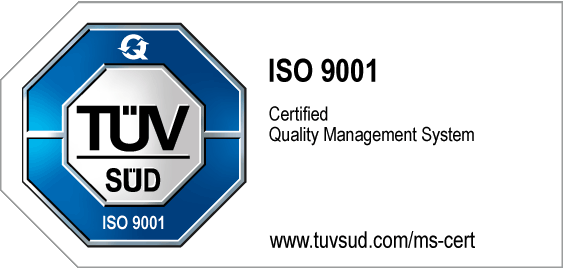Megatrends – At a Glace
| Meaning and Application: | Megatrends help identify future challenges and opportunities at an early stage and provide a strategic foundation for long-term planning. They are used in business, politics, and research to promote innovation, adapt business models, and better understand societal developments. |
| High Value in Times of Uncertainty: | In times of high uncertainty, megatrends offer orientation by highlighting stable, long-term developments that extend beyond short-term fluctuations. They enable strategic decisions to be based on reliable future perspectives and help to better assess risks. |
| Key Advantages: | Megatrends provide a reliable basis for developing future-proof strategies, products, and business models. They promote a holistic understanding of social, technological, and economic change, thereby strengthening an organization’s capacity for innovation and adaptability. |
| Weaknesses and Challenges: | Due to their broad and long-term orientation, megatrends can lead to vague or abstract statements, making it difficult to derive concrete measures. There is also a risk of overlooking short-term developments or overestimating megatrends if they are considered uncritically or without context. |
Definition of Megatrends
Megatrends are long-term, profound developments that have a major impact on almost all areas of life, such as society, economy, technology, environment, and politics. They unfold over several decades and have global effects, regardless of short-term events or regional specifics.
Megatrends are marked by stability, complexity, and high relevance for strategic decisions. They influence not only individual industries but also transform entire ways of thinking and acting. In contrast to short-term trends, megatrends are robust and offer a reliable foundation for long-term planning.
Megatrends are typically identified through systematic trend analysis, in which a variety of signals from science, business, society, and technology are gathered and evaluated. The goal is to recognize recurring patterns and place them in broader developmental contexts.
Tools such as the trend radar are used – a visual representation that classifies trends by relevance, proximity, and impact. The trend radar helps organizations keep track of relevant developments and incorporate them into strategic thinking. This structured approach enables early responses to change and the use of innovation potential.
Overview of characteristics of megatrends
- Long-term time horizon (usually 20–30 years or more)
- Global impact across national and cultural borders
- High relevance to society, economy, and technology
- Profound influence on multiple areas of life
- Resilient to short-term fluctuations and fads
- Complex and multi-layered, often interconnected with other trends
- Basis for strategic planning and foresight
- Identified through systematic trend analysis
- Visualizable, e.g. via trend radar tools
- Encourage innovation and new business models
How megatrends emerge
Megatrends arise from profound changes in society, technology, environment, economy, and politics that unfold over many years. They evolve from smaller trends that gradually intensify, spread, and manifest across various areas.
Early indicators such as new lifestyles, technological innovations, or demographic shifts provide initial clues. Through continuous trend scouting, these developments can be identified and documented early. The aim is to detect weak signals before they enter the mainstream.
Systematic Analysis and Classification
As part of strategic foresight, identified trends are analyzed, evaluated, and placed in broader contexts. This includes assessing their relevance, reach, and persistence to distinguish between short-lived hypes and long-term developments.
Methods such as Delphi studies, scenarios, or trend radars support systematic evaluation. Megatrends emerge when individual trends persist over long periods and gain global significance. They are not “made” but rather evolve from complex interactions over time.
Importance for Strategy and Innovation
Companies, organizations, and policymakers use insights about emerging megatrends to develop robust strategies for the future. Early engagement with such developments enables them to identify risks, seize opportunities, and steer innovation processes effectively.
Trend scouting is a central tool for reacting early to change. Integrating megatrends into strategic foresight provides a long-term orientation framework. This not only enables reaction but also opens up creative spaces to actively shape the future.
How do megatrends differ from other trends?
Megatrends differ from other trends in their long-term impact and profound relevance for the future of society, economy, and the environment. While short-term trends often affect only specific industries or target groups, megatrends have broad thematic and geographic reach and are closely linked to processes such as globalization or demographic change.
In futures studies, they serve as stable anchor points for understanding and strategically classifying complex developments. They influence fundamental value systems and sustainably transform how we live and work.
Megatrends encompass major themes such as sustainability, digitalization, or urbanization that gain importance over many years and shape societies around the world.
12 examples of megatrends
Current megatrends are shaping the way we live, work, and interact on a global scale. These powerful, long-term developments influence nearly every aspect of society and reveal where the world is heading. Below are 12 key examples of such megatrends.
Connectivity & Digitalization
The internet has fundamentally changed our lives by connecting people worldwide. Social networks have significantly accelerated and democratized communication, collaboration, and knowledge sharing.
Online platforms have become central marketplaces and social spaces where opinions, experiences, and even business relationships are shared more easily than ever – fostering new forms of human solidarity.
Attention Economy
Attention Economy highlights how capturing and maintaining attention has become a key success factor in business, shaping marketing strategies, media content, and digital platforms. It also influences the workplace and talent acquisition, as companies compete not only for customers’ attention but also for skilled employees who can thrive in fast-paced, content-driven environments.
Healthy Living & Health
Healthy Living & Health emphasizes proactive approaches to well-being, where individuals are increasingly prepared to take responsibility for their own health. Through better education and the ability to access personalized healthcare solutions, people are empowered to make informed lifestyle choices and prevent illness.
Individualism
Individualism reflects a growing focus on self-realization and self-optimization, as people seek to shape their lives according to personal values and goals. This shift is accompanied by greater appreciation for diversity, as societies become more inclusive and supportive of different lifestyles and identities.
Industry 4.0
Industry 4.0 represents the integration of automation, data exchange, and smart technologies into industrial production, fundamentally transforming management and manufacturing processes. It reshapes the workforce by requiring new digital skills, while enabling more efficient use of energy and resources across the entire value chain.
Mistrust Society
Mistrust Society highlights the growing skepticism toward institutions, media, and authorities in an age of misinformation and digital overload. In response, transparency becomes a key value, with organizations seeking new solutions to build credibility and regain public trust.
Mobility
Mobility is driven by transformative forces such as automation, digitalization, and the shift toward energy-efficient transportation systems. New mobility concepts focus on flexible, user-centered service models that reduce emissions and redefine how people and goods move in urban and rural environments.
Sustainability
Sustainability addresses the global need to rethink production, consumption, and resource use in response to climate change and environmental degradation. As extreme weather events increasingly impact various regions, sustainable practices are becoming essential to ensure long-term ecological balance and economic stability.
Transhumanism
Transhumanism explores how scientific research and technological advancements aim to enhance human capabilities and overcome biological limitations. While offering innovative solutions for health and longevity, it also raises ethical questions and the risk of unintended consequences that society must carefully evaluate.
Urbanization
Urbanization reflects the continuous rise of cities as central hubs for humanity, concentrating resources, innovation, and opportunities. This shift challenges employers and workers alike to adapt to new urban infrastructures, commuting patterns, and evolving demands for flexible and inclusive living and working environments.
Seamless Commerce
Seamless Commerce describes the integration of online and offline retail channels to create a smooth, personalized customer experience. To fully benefit from this shift, leadership must guide teams in adopting digital tools and agile strategies that align with evolving consumer expectations.
The Future of Work
The Future of Work describes the transformation of the modern workplace through digital technologies, flexible structures, and remote collaboration. It fundamentally changes talent acquisition by emphasizing specialized skills, adaptability, and data-driven HR strategies to meet evolving organizational needs.
Recognizing and exploiting megatrends
In the world of megatrends, it is crucial to identify relevant developments early in order to better assess opportunities and risks. The Megatrend Map is an important tool to systematically visualize various megatrends and understand their interdependencies. Companies use these maps to make strategic decisions and drive targeted innovation.
Important methods for identifying megatrends
Key methods for identifying megatrends include systematic trend analysis, trend scouting, Delphi studies, and scenario techniques. As part of professional trend management, societal, technological, economic, and ecological developments are monitored and evaluated to recognize long-term dynamics.
Monitoring scientific publications, start-ups, and changes in consumer behavior can also provide valuable insights into emerging megatrends. By combining quantitative data analysis with qualitative assessments, a sound picture of future developments emerges. The goal is to identify strategically relevant trends early and make them usable.
Frequently asked questions and answers
Megatrends are long-term, transformative forces that shape the future of economic and social affairs on a global scale. They influence how societies function, how businesses operate, and how people live and work over decades. By identifying these developments early, organizations can align their strategies with long-term change, driving innovation and building resilience.
Connectivity & Digitalization
Attention Economy
Healthy Living & Health
Individualism
Industry 4.0
Mistrust Society
Mobility
Sustainability
Transhumanism
Urbanization
Seamless Commerce
The Future of Work
Megatrends are characterized by their long-term impact, global relevance, and transformative effects across various areas of life. They provide orientation for the future by highlighting stable developmental patterns that go beyond short-term trends. In times of change, they create a sense of security by helping to better understand complex developments and interpret them strategically.
Sources:
- Bojovic, M., McGregor, A. A review of megatrends in the global dairy sector: what are the socioecological implications?. Agric Hum Values 40, 373–394 (2023). https://doi.org/10.1007/s10460-022-10338-x
- Kruse, M., Nitt-Drießelmann, D. & Wedemeier, J. Megatrends und Strukturwandel — welche Regionen werden profitieren?. Wirtschaftsdienst 102, 392–396 (2022). https://doi.org/10.1007/s10273-022-3194-4
- C. Bash et al., “Megatrends” in Computer, vol. 56, no. 07, pp. 93-100, July 2023, doi: 10.1109/MC.2023.3271428.
keywords:
Abstract: Understanding megatrends allows individuals and organizations to align with and benefit from the richness of trending technologies.
URL: https://doi.ieeecomputersociety.org/10.1109/MC.2023.3271428


